If you are into color grading and compositing then you probably know that the Blackmagic Design recently updated their innovative video and film application offer: DaVinci Resolve and Fusion are used and trusted world over, for their reliability, simplicity, rapid development and cutting-edge features.
Two big software updates of these awesome post-production applications are in the wild. We now have the DaVinci Resolve 12 and Fusion 8 beta to play with, with Fusion available for the first time for Mac OS X.
It is important to appreciate the long way these software solutions have come. Without them, we would probably still be stuck with grainy vintage video quality in films, TV shows and commercials.
History
It all started with the Wiz, which was developed by VTA in 1982. It was a simple prototype that would eventually evolve to DaVinci color corrector. It was used wildly until the DaVinci Classic came along, way back in 1984.
This analog grading system came out to be the best color editor, trusted by big names like Fernseh FDL 60 and Rank Cintel telecines. It featured a personalised external control panel with internal main and secondary processing. In short, it was wildly popular.
This amazing solution was acquired by Dynatech Video Group in 1986. Following the acquisition was the DaVinci Renaissance, an analog system similar to the Classic. However, it ran on a Motorola 68020 Multi-Bus system with a 3.5 inch floppy. A lot of changes occurred from 1989 to 2009.
In between this period (from Renaissance) new improvements were as follows: DaVinci renaissance 888 (1992), DaVinci 2K and 2K plus (1998), TLC (2002) and in 2004 we got the Resolve. Since it was first developed, DaVinci has been acquired by a number of companies. It was acquired by Blackmagic Design in 2009.

DaVinci Resolve control surface
And this is where the magic started. 5 years later post world is waiting to see how BMD is going to create union of Resolve and recently acquired Fusion.
For over a quarter a century, Fusion has developed and has built a solid-rock reputation and popularity among its users. It was originally developed in 1987 and it was originally written in DOS. The Eyeon software was specifically formed to commercialise Fusion. This software and the Eyeon software inc. was officially purchased by Blackmagic Design in 2014.
![]()
Features of DaVinci Resolve 12
DaVinci Resolve 12 comes with a new Interface, it has a new font and a lighter overall color scheme that is cleaner and easy to the eye, but there is a option to use old, grey scheme. Interface design takes full advantage of high DPI monitors like retina displays and also supports multiple monitor configurations.
Resolve 12 now has the ability to better integrate with other NLEs. It is possible to “roundtrip” timelines to other editing program and more of plug-ins, settings and edits are preserved.
It supports up to 8GPUs on Linux boxes which will allow you to secure super fast dedicated systems that deliver real time performance for the most demanding tasks. On another side there is support for Iris Pro and Intel’s Iris embedded graphics, thus this software can be used in several types of laptops.
DaVinci Resolve 12 now has a multi-camera editing feature that allows an editor to cut programs from multiple sources in real-time. It has the ability to synchronise camera angles. This will be based on audio waveforms, time code or in/out points. Camera angles will be displayed in a grid by the source monitor which will play them all back in sync as the editor does the cutting to the video and/or audio. It also helps you to cover jump cuts with new smooth cut transition tool.
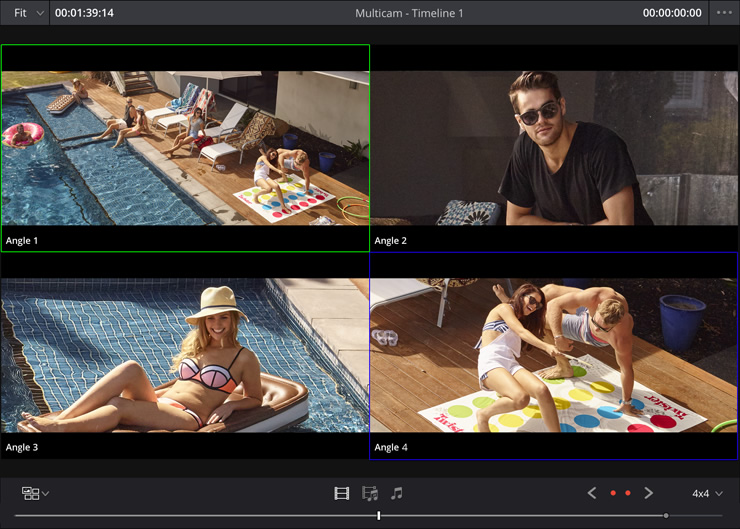
Audio
Also featured is a completely new audio engine with high performance. This one provides high sampling rates and a more improved real-time audio playback performance. It also offers a reverse playback including a tape style slow motion polishing in dynamic JKL trimming. It is now possible to record audio parameter adjustments. These adjustments now have editable automation and complete curve editor support.
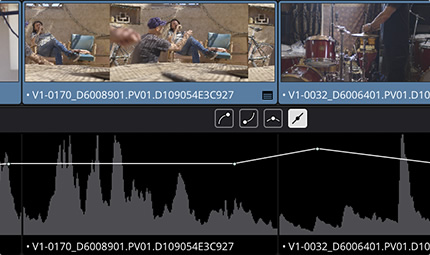
Work Made Easier
Editorial workflows can now be contained in DaVinci resolve 12 media management. You can now manage your projects and media using new move, copy, relink, consolidate and transcode tools. It is easy to archive and restore all projects including media. With this software you can search and find media in vast projects as users are allowed to come up with smart bins that can show footage based on metadata tags.

This means that colorist can conform the project from clients Thunderbolt or USB drives and copy or transcode just (trimmed) shots needed for certain sequence or project.
There is an extension of editing tools such as trim modes, slide, multi-slip, roll and ripple. As an editor, you can now choose multiple points for asymmetric and dynamic trimming of clips even when they are on the same track.
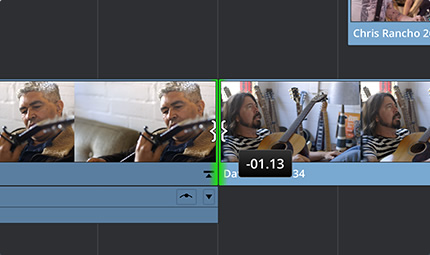
Resolve 12 also has good improvements on its awesome tracker. It has a new 3D perspective tracker which fixates on objects which over time, their perspective changes throughout the duration of the clip.
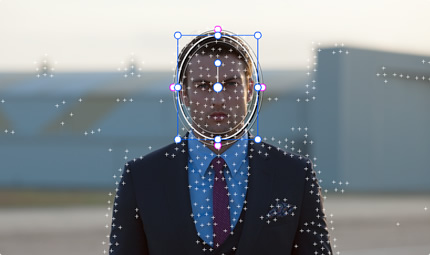
There is also some improvement in the color correction and core grading tools providing a new and easy to use curves interface.

It also include automatic color analysis and a match between two or more clips. There is also a new 3D keyer with better matte finesse options and improved roto tools.
Great help is a new compound node and more effective caching.
DaVinci vs the Competition
From the version 12 Resolve is fighting big time in NLE arena but it also moves step closer to finishing applications like Flame, Smoke or Nuke Studio. Advanced retiming, realtime PTRZ controls, motion blur, advanced audio, simple cleanup with node sizing tool, support for OFX plugins, fast renders and heavy weight conforming options will sound basic for finishing veterans, but BMD is building a rock solid foundation for the future.
Resolve also has timeline nesting, compound clips and shot selectors that are great help when you working with complex projects with multiple timelines, when you need to do a versioning or track everyday VFX changes.
![]()
Features of Fusion 8
For the colorist like myself, coming from the both editing and compositing background, it was really interesting to explore rich future set of this advanced compositor.
Fusion has a powerful node based interface which makes it easier to quickly build advanced visual effects composition. A node is a small icon that represents filters, effects, and other image processing operations. These items can be connected together for the creation of visual effects.
Compared to timeline applications, seeing and adjustment of any part of a project in fusion is easy. You just click on a node and you get access to properties of certain node.
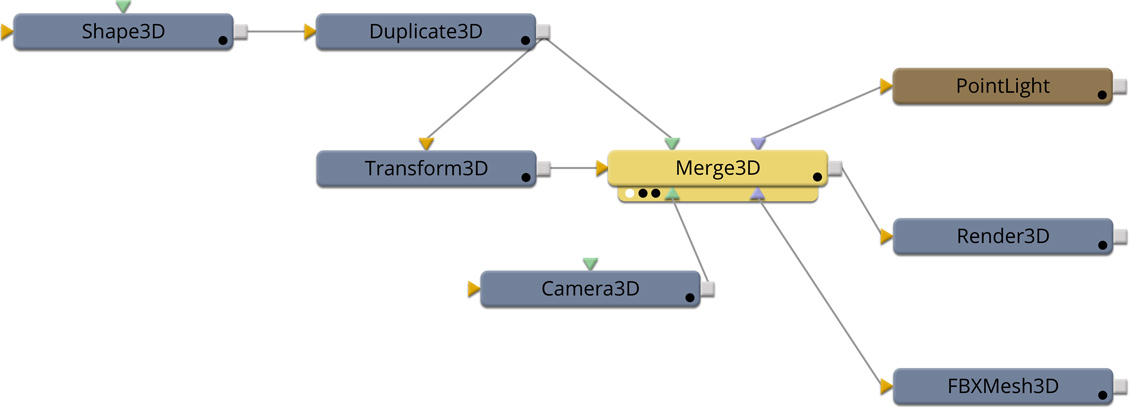
This software can now be used in both Windows and Mac OS X. This is the first ever Fusion release that is compatible with Mac. Through this, a lot more users get high end visual effect than before and millions of doors to motion graphic artists, video editors, broadcast designers, 3D animators and visual effect compositors have been opened.
2D and 3D Capabilities
Fusion node based architecture integrates 2D and 3D motion graphic and compositing software. This “massive toolset” as referred by BMD features paint, rotoscope, multiple keyers, animation, advanced key-framing, a 3D particle system, GPU acceleration, and a support which allows importing and rendering of 3D scenes and models from other apps.
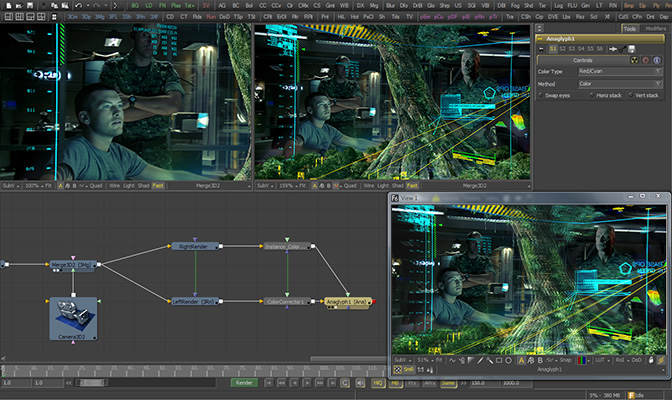
In Studio version there is advanced optical flow image analysis tools which are used for stereoscopic 3D purpose, stabilisation and retiming, OFX support and shared database workflow.
Fusion artist can access toolset which consist of hundreds of inbuilt tools such as object tracking, animate titles, pull keys, retouch images, rotoscope, create wonderful particle effects among other things , all in one true 3D workspace.
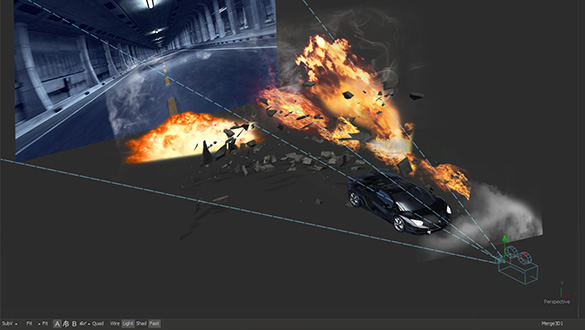
You can import point cloud data, 3D models, cameras and even whole 3D scenes from 3Ds Max, Lightwave or Maya and with other elements, render them seamlessly.
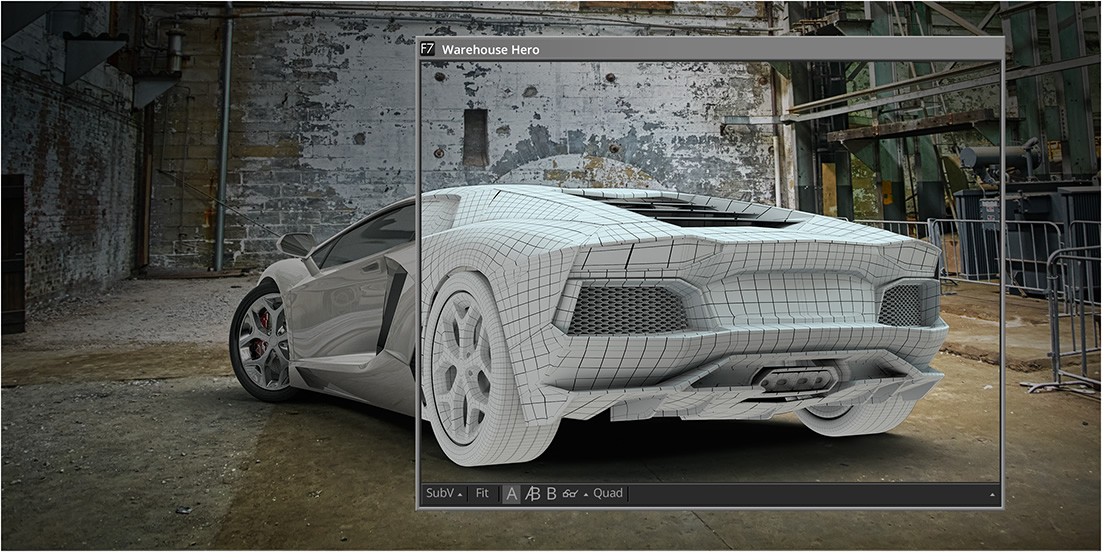
It also has deep pixel tools that can help add volumetric fog, reflection mapping and lighting of rendered objects with the help of world position passes. This way, you can create marvellous atmospheric affects that take seconds and not hours to render.
Since Fusion 8 is still in beta I’m sure that stability and overall performance will be improved with final version, but even now I’m very impressed with power and speed I’m getting using top end Mac Pro with BMD Ultrastudio 4K and Pegasus 2 storage.
Conclusion
I’m sure that BMD will figure it out how to integrate node based compositing from Fusion in Resolve in not so distant future. They already have Fusion Connection plug in for Avid which can be starting point, but if you think about Generation and collaborative options already inside Resolve, than things start to get pretty interesting.
Together, Fusion and Resolve could soon take over the post-production industry by storm, effectively position itself as a world’s-number-one advanced editorial, motion graphics, visual effects, grading and finishing solution.

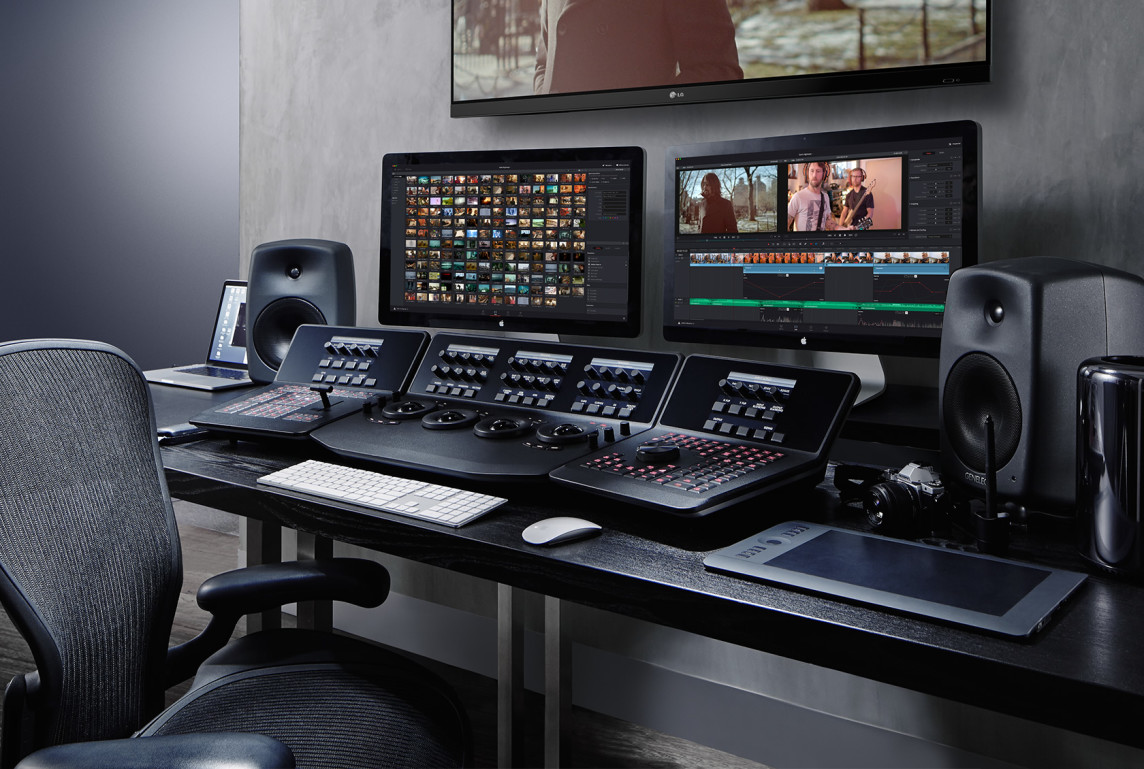
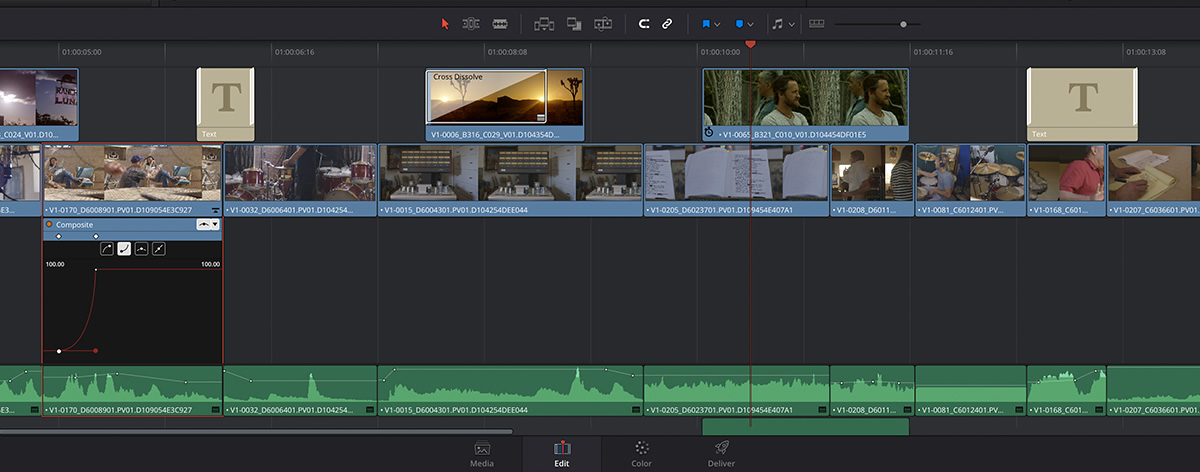




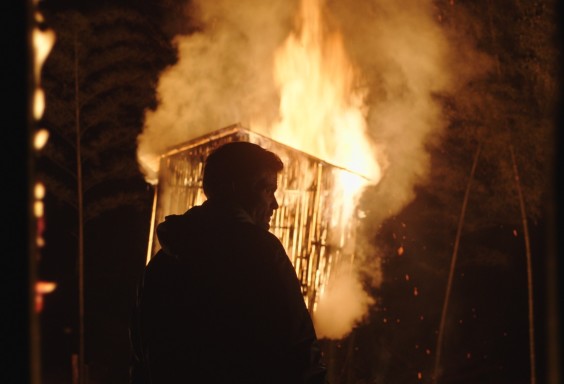

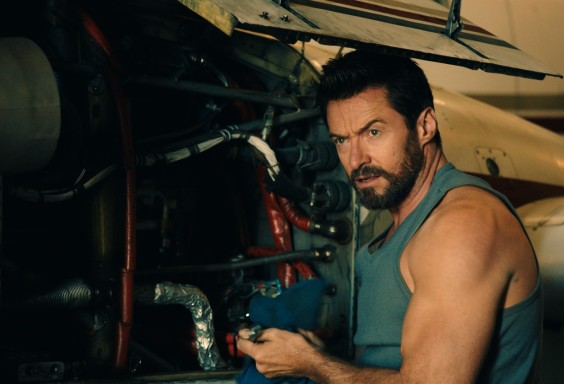
No comments yet.